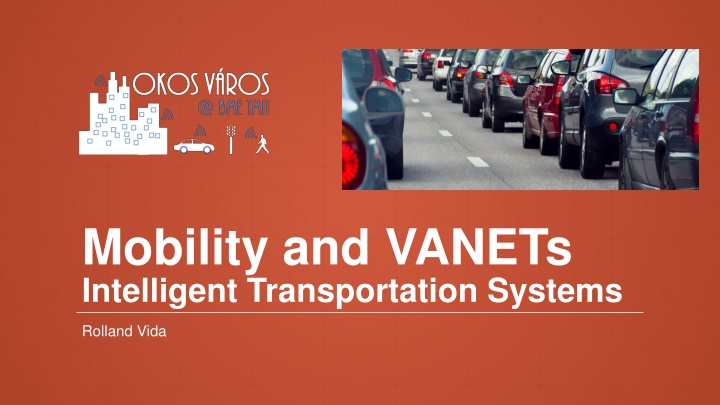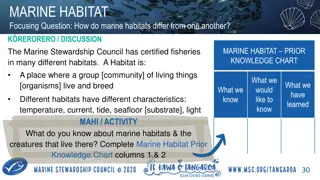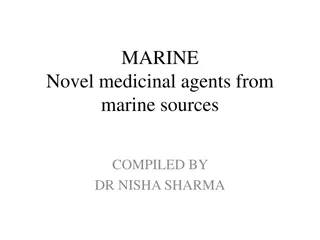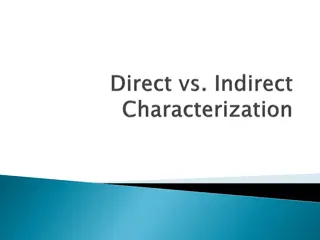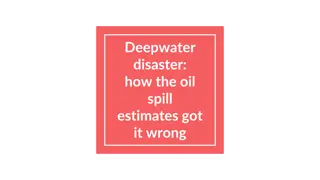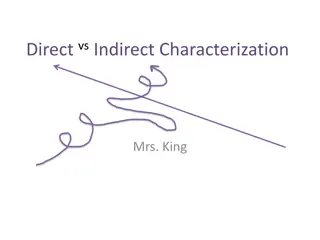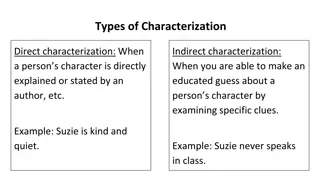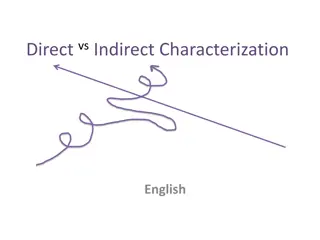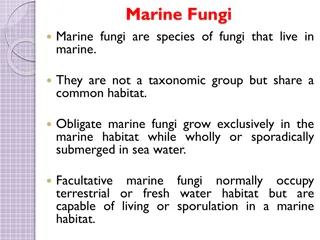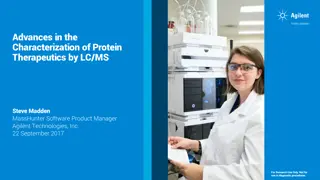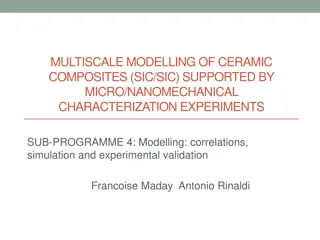Modeling and Characterization of Novel Deepwater Marine Risers
This research focuses on modeling and characterizing novel deepwater marine risers for offshore applications in the oil and gas industry. The study encompasses the analysis of riser configurations, catenary equations, loads on risers, Orcaflex modeling, and current work updates. The aim is to enhance understanding of riser behavior under varying ocean conditions and improve design methodologies for deepwater installations.
Download Presentation

Please find below an Image/Link to download the presentation.
The content on the website is provided AS IS for your information and personal use only. It may not be sold, licensed, or shared on other websites without obtaining consent from the author.If you encounter any issues during the download, it is possible that the publisher has removed the file from their server.
You are allowed to download the files provided on this website for personal or commercial use, subject to the condition that they are used lawfully. All files are the property of their respective owners.
The content on the website is provided AS IS for your information and personal use only. It may not be sold, licensed, or shared on other websites without obtaining consent from the author.
E N D
Presentation Transcript
Mobility and VANETs Intelligent Transportation Systems Rolland Vida
DTN: Delay Tolerant Network If nodes are sparse, the network connectivity can be broken Topology holes will appear This can be handled by the carry-and-forward method Data-mules It is possible if the message is still valid in spite of the delay Mobility prediction is very useful Intelligent Transportation Systems 2 April 8, 2020
VADD: Vehicle-Assisted Data Delivery in VANET Carry-and-forward, optimized to the lowest delivery delay Prefers radio links, as they are faster than using data mule cars If data has to be carried by a car, it chooses the fastest car that goes in the good direction Dynamic routing step by step VADD delay model Distances between intersections Average vehicle density on each segment Average vehicle speed on each segment Stochastic model We cannot calculate in advance the entire path It depends on whether in a given intersection, at a given moment there will be a car to forward the message in a given direction, or not We can calculate probabilities Intelligent Transportation Systems 3 April 8, 2020
GeOpps: Geographical Opportunistic Routing Assumes that cars know in advance their trajectory Using some navigation, travel planner software Next hop selected in three steps: Each neighbor calculates for its trajectory the closest point to the destination It calculates how much time it takes to that closest point If the trajectory of one of the neighbors gets closer to the destination than that of the current node, then the packet is taken over If the car changes its trajectory, everything should be recalculated Intelligent Transportation Systems 4 April 8, 2020
VANET broadcast protocols We have a target zone, within which all the vehicles should receive the message (Broadcast Domain) However, the load on the network should be minimized, (avoid broadcast storms) DECA: Density-Aware Reliable Broadcasting Does not use position information Beacon messages sent to discover neighbors Network load is minimized by chosing as next hop the neighbor that has most neighbors Intelligent Transportation Systems 5 April 8, 2020
Intelligent flooding through gossiping Messages are rebroadcast or dropped with a given probability p Carefully Localized Urban Dissemination (CLoUD) The drop probability on a given road segment depends on the probability of cars on that segment heading towards the source of the flooding (where the danger was detected) Needs a traffic database Turn probabilities at each intersection Stop probability on each segment Average traffic density in different periods of the day Increasing reliability with a voting mechanism The message is dropped only if there are sufficent votes to drop it Miklos Mate, Rolland Vida, Reliable Gossiping in Urban Environments , in Proceedings of 72nd IEEE Vehicular Technology Conference VTC-Fall, Ottawa, Canada, September 2010. Intelligent Transportation Systems 6 April 8, 2020
Intelligent flooding through gossiping Simulation results for the CLoUD protocol Digital map of Budapest, warmer colors mean more messages received by that car If the problem occurs on a main road (left), the message is spread more broadly If the problem occurs on a side road (right), the flooding dies out fast Intelligent Transportation Systems 7 April 8, 2020
VANET Multicast protocols There is a given area inside which all cars should receive the message (Zone of Relevance) The multicast group is implicitely defined by the position of the cars The source is not necessarily inside the ZOR, so first the packet should be delivered to the ZOR, through unicast routing, and then flood the ZOR E.g., information about traffic jam is not interesting for those already in the jam The alert should be sent to those who can still avoid it Intelligent Transportation Systems 8 April 8, 2020
Mobicast Mobile Just-in-time Multicasting The Zone of Relevance, or Delivery Zone, moves with a given speed E.g., give way to the ambulance We should ensure that within some space-time coordinates, each car that enters the Delivery Zone should receive the message before it enters the zone, or just on entering the zone Intelligent Transportation Systems 9 April 8, 2020
Mobicast Forwarding Zone Preceeds the Delivery Zone Nodes in this zone rebroadcast the message Hold&Forward Zone They only store the message, and retransmit it only when entering the Forwarding Zone Intelligent Transportation Systems 10 April 8, 2020
Communication architectures Car-to-Car (C2C) or Vehicle-to-Vehicle (V2V) Cars communicate directly among each other Car-to-Infrastructure (C2I) or Vehicle-to-Infrastructure (V2I) Communication among cars and the deployed infrastructure Mobile base stations Sensors, data storage, gateways deployed next to the road RSU Road Side Unit Car-to-Pedestrian In between C2C and C2I Different mobility models Intelligent Transportation Systems 11 April 8, 2020
Communication architectures Centralized Distributed Centralized Coverage/ range Complete Low, separated islands Speed Traffic data is periodically sent to the central database collisions, interferences Reliability Cars receive traffic information from the central database limited limited Capacity Distributed yes no Price Traffic data Ad hoc tempomat Collision avoidance Intelligent Transportation Systems 12 April 8, 2020
Hybrid solutions Some cars can communicate with the central entitty, through the mobile network E.g., LTE Others communicate only with each other They can not, or do not want to communicate with the central entity Intelligent Transportation Systems 13 April 8, 2020
DSRC Dedicated Short Range Communications Dedicated in 1999 by the FCC (Federal Communications Commission) to vehicular communications 75 MHz of spectrum in the 5.9 GHz band (5.850-5.925 GHz) In Europe, ETSI allocated in 2008 30 MHz in the 5.9 GHz band for ITS Systems in US, Europe, Japan not really compatible with each other Intelligent Transportation Systems 14 April 8, 2020
DSRC Dedicated Short Range Communications Traditional ISM bands (Industry, Science, Medical) 900 MHz, 2.4 GHz, 5 GHz Free, unlicenced bands Populated by many technologies Wifi, Bluetooth, Zigbee No restrictions other than some emmission and co-existance rules DSRC band Free but regulated spectrum Restrictions in terms of usage and technologies All radios should be compliant to a standard Intelligent Transportation Systems 15 April 8, 2020
DSRC Dedicated Short Range Communications Basic goals of DSRC Support of low latency, secure transmissions Fast network acquisition, rapid and frequent handover handling Highly robust in adverse weather conditions Tolerant to multi-path transmission Mainly for public safety applications, to save life and improve traffic flow Private services also permitted Spread the deployment costs, encourage quick development and adoption Electronic Toll Collection (ETC) was initially one of the main drivers Intelligent Transportation Systems 16 April 8, 2020
WAVE IEEE 802.11 Collection of physical (PHY) and medium-access control (MAC) layer specifications for implementing WLAN 802.11a (5 GHz, OFDM), 802.11b (2.4 GHz, DSSS), 802.11g (2.4 GHz, OFDM), 802.11n (2.4 and 5 GHz, MIMO-OFDM), 802.11ac (5 GHz, MIMO-OFDM) 802.11p part of WAVE (Wireless Access in Vehicular Environment) WME WAVE Management Entity PLME Physical Layer Manag. Entity MLME MAC Layer Manag. Entity LLC Logical Link Control WSMP WAVE Short Message Prot. Intelligent Transportation Systems April 8, 2020 17
WAVE spectrum bands 75 MHz wide spectrum divided into 7x10 MHz wide channels, 5 MHz guard band Channel 178 the control channel (CCH) - transmit WAVE Short Messages (WSM), announce services Channel 172 reserved for high availability applications (future use) Channel 184 reserved for intersections The other channels shared between public safety and private uses Channels 174-176 and 180-182 can be combined to form a 20 MHz channel In Europe the ITS-G5 standard ITS-G5B band: 5.855 5.875 GHz 172, 174 SCH ITS non-safety app ITS-G5A band: 5.875 5.905 GHz 176, 178 SCH ITS traffic safety app 180 CCH ITS-G5D band: 5.905 5.925 GHz 182, 184 SCH for future use Intelligent Transportation Systems 18 April 8, 2020
WAVE (802.11p) vs IEEE 802.11 10 MHz channels instead of 20 MHz 3-27 Mbps instead of 6-54 Mbps Same modulation schemes (BPSK, QPSK, 16QAM, 64QAM) Carrier spacing reduced to 0.15625 MHz from 0.3125 MHz 48 data subcarriers for both Intelligent Transportation Systems 19 April 8, 2020
802.11p MAC Enhanced Distributed Coordination Access (EDCA) Defined in IEEE 802.11e, to support Quality of Service differentiation In 802.11e four Access Categories (AC) Voice, Video, Best Effort and Background In 802.11p ACs to differentiate between safety critical and non-safety applications Arbitration Inter-Frame Spacing to replace the static DIFS Different values for each Access Category AIFS = 1 SIFS + AIFSN * slot time By default Voice Queue 1 SIFS + 2 * slot time (AIFSN = 2) Video Queue 1 SIFS + 2 * slot time (AIFSN = 2) Best Effort Queue 1 SIFS + 3 * slot time (AIFSN = 3) Background Queue 1 SIFS + 7 * slot time (AIFSN = 7) When AIFS expires, choose a random value between 0 and CWmin (minimum contention window) Start decrementing a backoff timer after each slot time If another node starts transmitting, access is deferred until the channel is free again Then backoff timer decrementation is resumed from where it was stopped If backoff = 0, transmission starts If collision, no ACK received CWmin is doubled until it reaches CWmax Intelligent Transportation Systems 20 April 8, 2020
802.11p beaconing Basic Service Set in traditional IEEE 802.11 Multiple handshakes to ensure distributed medium access Wave Basic Service Set (WBSS) in 802.11p A node broadcasts a beacon, to advertise its WBSS What kind of services it supports, how to join the WBSS Within the WBSS, nodes exchange beacons using the Wave Short Message Protocol (WSMP) To create cooperative awareness Information on speed, position, acceleration, direction Sent at regular intervals (e.g., 10 Hz 100 ms) Sent on the CCH, no ACK After the channel is sensed free for AIFS If not free, backoff for the size of a Contention Window, and try again No doubling of the contention window As opposed to data sent on SCH, where ACK should be sent If no ACK received, collision occured, contention window doubled Intelligent Transportation Systems 21 April 8, 2020
IEEE 1609.x IEEE 1609.2 security services IEEE 1609.3 management services Channel usage monitoring Received channel power indicator (RCPI) Management parameters IEEE 1609.4 QoS and multi-channel access User Priorities mapped to Access Categories in EDCA Multi-channel access for single radio 802.11p devices Intelligent Transportation Systems 22 April 8, 2020
IEEE 1609.4 channel swithcing 7 FDMA channel frequencies Multi-channel radios can send and receive over several channels simultaneously Single channel radios to access both CCH and SCH Either transmit or receive on a single 10 MHz channel Alternating access Repetitive periods of 100 ms 46 ms allocated to the CCH channel 46 ms allocated to the SCH channels 4 ms guard interval for switching between CCH and SCH Nodes should wait for a random backoff after the end of the guard interval, before starting to transmit Time synchronisation needed to an external time reference Coordinated Universal Time (UTC) from GPS or other devices WAVE Time Advertisement (WTA) frame Intelligent Transportation Systems 23 April 8, 2020
IEEE 1609.4 channel switching Continuous access Transmission can be continuous on the CCH and all SCHs It cannot be guaranteed that all other stations will listen to the CCH outside the CCH slot Safety messages sent over the CCH in the SCH slot might be ineffective The usage of SCH not efficient if nodes listen to the CCH 50% of the time Alternative solutions to minimise the impact of channel switching? Intelligent Transportation Systems 24 April 8, 2020
IEEE 1609.4 channel switching Immediate access The node does not have to wait until the CCH slot is over After the CCH transmission is over, switch to SCH Improve the performance of bandwidth-demanding non-safety applications in SCH, at the expense of the CCH Extended access Transmission on the SCH without waiting for the CCH Adaptive Independent Channel Switching If more vehicles, more beacons on the CCH Nodes can change their average switching time based on vehicle density Long SCH intervals if not many vehicles Fewer collisions at the start of the SCH, as nodes switch independently of each other Drawback is that not all nodes on the CCH in the same time Vehicle 1 will miss the beacon of Vehicle 2 Intelligent Transportation Systems 25 April 8, 2020
IEEE 1609.4 channel switching Fragmentation To better utilise the residual time at the end of the SCH interval An extra fragmentation header should be used, which is a drawback Works for large packets (TCP) Best-fit scheme Send the packet that best fits the residual time at the end of the SCH interval Better than fragmentation only if packets of different sizes are present in the queue Hard to know in advance the actual duration of transmission Frequent changes in the channel congestion Stochastic nature of backoff Intelligent Transportation Systems 26 April 8, 2020
